We warmly welcome Charlie Larson, author of Anubis—Ancient Egypt’s Lord of Death and Protection, as our featured author this month. Charlie’s book is an intimate and in-depth exploration of the history, roles, symbolism and mythology surrounding Anubis—Egypt’s original Lord of the Dead. Charlie’s book focuses the spotlight squarely on the jackal-headed god, providing a practical guide to working with Anubis that features devotional practices and modern worship, including rituals, prayers, invocations, correspondences, altars, and epithets. The book leads the reader on a journey of exploration into all things Anubis, delving into his various facets—death deity, psychopomp, and protector. In his article below, Charlie introduces the reader to this evocative figure, examining Anubis’ evolving roles in the ancient world.
Interact with Charlie on our AoM Forum here.
“A poignant, powerful, inclusive, and deeply personal journey to meet the Great God Anubis. Filled with solid historical information, as well as practical contemporary rituals, magick, healing practices, and prayers, this book drew me in, opened my heart, and made me love dear Anubis even more.”
—Michael Butler Smith, author of Embracing Isis
Ancient Egypt is a topic that fascinates many. Pyramids, tombs, hieroglyphics and mummified remains lead to an air of mystery that many people find intriguing. Popular culture has, through movies, TV shows, books, and more, shone a light on Ancient Egypt and brought it out of the old and into the modern world. Even if it’s often a misconstrued, fictional, or even fantastical depiction of the ancient world, it still has a place in people’s minds. As the decades go by, scientists and archaeologists uncover more and more truths about the ancient world that so fascinates us.
There are certain symbols and images that people can often instantly recognize, even if they don’t know anything about Egypt. One of the most recognized features of Egyptian art is the depiction of gods and goddesses as being humanoid with the head, or perhaps other features, of an animal – or sometimes featured as an animal altogether. There is some speculation as to why this is, but it does demonstrate the importance of the animals of Ancient Egypt and the land they inhabit.
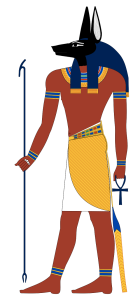
Anubis in his role as embalmer, by Jeff Dahl (CCBYSA4.0)
One such figure is that of a humanoid figure with the head of a canid of some kind (canid, coming from Latin origin meaning “dog-like”). And while there are many canid-headed figures in Ancient Egypt, one of the most well-known, and arguably most popular, is that of Anubis. Anubis is a complicated deity, more than one might expect. Many may know him simply as a jackal-headed god associated with embalming and mummification. And while this is definitely true, there is far more to him than meets the eye.
Anubis is one of the oldest gods in the Egyptian pantheon, dating back to 3100 BCE, or earlier. The association between jackals and death dates back as far as 6000 BCE. It’s widely accepted that the animal he is portrayed as is a jackal, as they are widely found in the desert sands of Egypt, though modern ideas include the possibility that it could be an Ethiopian Wolf, or even some long-extinct unknown canid.
Dogs and other canids have long been associated with death. In the case of jackals, they are carrion animals who would, in the early days of burying the dead in the ground, dig up the remains in these shallow graves to eat. Perhaps this worship began as an early way to appease the jackals to not eat the remains of their departed loved ones. This is simply a thought without backing, but an interesting one to ponder. We will never truly know for sure.
The name Anubis is the name assigned to him by the Greeks, and it is a name that has stuck in the modern world. His name, given to him in the language of Ancient Egypt, would be something akin to Anpu. Modern Egyptologists, linguists, and archaeologists can understand this thanks to the Rosetta Stone – not the language learning app, but the original Rosetta Stone. It was discovered in the late eighteenth century. It was a document written in three languages: hieroglyphics, Demotic (a sort of short-hand evolution of the language of Ancient Egypt), and Ancient Greek. Thanks to the existing firm understanding of Ancient Greek, the other languages could be deciphered and understood.
The origin myths of Anubis are complicated as well. Early records indicate that he is the son of Ra and Hesat, or perhaps Hathor. But one of the origin myths that has become the most popular is credited to Plutarch, a Greek philosopher and historian who lived in the first century CE. In one of his writings, he describes Anubis as the son of Osiris and Nephthys.
The short version of this story is as follows: In the Egyptian pantheon, Osiris is the god of civilization, agriculture, and, later, the underworld. His siblings include Isis (goddess of magic, healing, and light), Nephthys (goddess associated with magic, death and mourning), and Set (god of chaos, storms, and the desert). Osiris and Isis were a couple, and Set and Nephthys were a couple. The god Set was unable to give Nephthys a child, so she used her magic to disguise herself as her twin sister Isis and lured Osiris into bed. The offspring resulting from this union was Anubis. Fearing Set’s wrath, she hid Anubis. He was then discovered by Isis, who took him in and raised him as her own. Anubis became her protector and guardian, which will lead us shortly into another one of his roles—protector and guardian.
This contradicts earlier records of Anubis’ origins, but either way, Osiris’ popularity grew in Ancient Egypt, and he rose to the throne of Lord of the Underworld. This doesn’t mean that Anubis was “demoted” to a lesser role, but it does demonstrate the immense complexity that happened over the millennia in Ancient Egypt – people’s beliefs and values changed. The worship of gods and goddesses changed, too. Certain deities were seen as more important than others by pharaohs and important religious figures, so things shifted greatly as the years passed.
Anubis was known as the protector and guardian of souls. The living would petition Anubis for protection both in life and in the afterlife, for themselves and for their departed loved ones. Even pets were seen as sacred and worthy of protection in the afterlife. In one such location known as Saqqara, over 8 million dogs were found mummified. While it’s not known exactly why, it’s thought that this was seen as a place to say goodbye to one’s beloved pet, and possibly as a way to ask for Anubis’ protection for their beloved dog in the afterlife.
In one myth, Osiris was murdered by his brother Set, and his body was chopped into pieces and scattered across Egypt. Isis, with Anubis as her guardian and guide, and with the aid of her sister Nephthys, sought out the pieces. After all of the pieces were gathered (except one—his private parts), she asked again for Anubis’ help to bring him back to life. It was then Anubis who invented embalming and mummification so that Osiris’ body could be preserved. Isis then asked Thoth, god of wisdom and knowledge, to teach her the magical knowledge needed to resurrect him. After Isis brought Osiris back to life, he ascended thus to Lord of the Underworld. The rise of this myth demonstrates how, over time, Anubis came to be seen in a different light than perhaps he originally was.
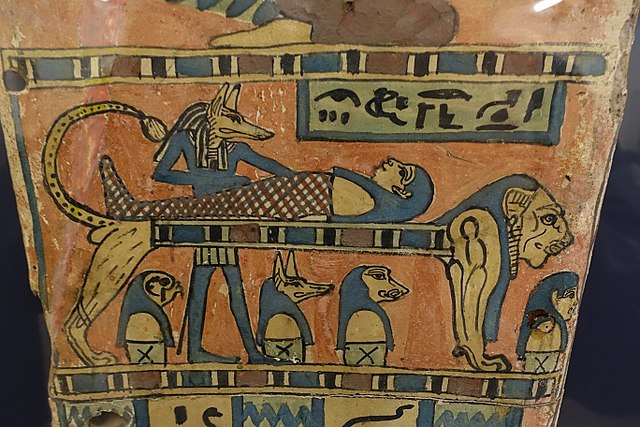
Coffin fragment, photo Daderot (PD)
This myth helps connect us to how Anubis is often seen, being associated with embalming and mummification. Embalmers would wear masks of Anubis, seen as a way to both honor and channel him in their work. It was an incredibly lengthy process that took months, and an immense amount of resources, including natron for drying out the body, resin and oils for preserving the body, and linen for wrapping the body. Amulets were placed between layers of wrappings as a way to protect the body and imbue it with certain magical intentions. All of this was done as a means of enabling the soul of the deceased to return to its body in the afterlife. There were multiple aspects of a person’s “soul”, and one of them was connected to your physical body and how a person appeared. Having a body to “return to” meant that your soul would have a vessel in the afterlife, so this is why such care and preparation were taken.
Right about this stage, priests would perform the Opening of the Mouth ceremony. They would use sacred tools to touch various points on the body, including the mouth. Another canid-headed deity named Wepwawet was known as the Opener of the Ways, one of the primary deities who was originally the performer of this rite. Over time, though, this role was assimilated to being Anubis’. Either way, this ceremony was the rite that would allow the soul to return to its body.
Wepwawet and Anubis were very similar. Wepwawet was sometimes portrayed with gray-colored skin, as opposed to Anubis’ black, to differentiate the two of them. This wasn’t always the case, though. The two of them were sometimes portrayed on opposite sides of a gateway or doorway in a tomb, as protectors – and in this case, they were both often portrayed as seated or laying black jackals. They were originally worshiped centrally in different parts of Egypt – one in the north and the other in the south. A thought – not proven in any way – is that they were local interpretations of the same deity, but again, this is merely a thought.
After a person’s death and their body had been preserved, another one of Anubis’ roles included ushering the souls of the deceased into the afterlife, to the place where their souls would be judged. Along this journey, there would be a series of trials to test the soul. He acted as their guardian, guide, and protector on this journey to the Hall of Judgments. This is known as a psychopomp, a guardian and guide in the afterlife that leads souls to their destination. Psychopomps aren’t judges – it is their duty to usher all souls through the first stages of the afterlife. Other psychopomps include Hermes, Hekate, Charon, Pushan, the Valkyries, Morana, and Archangel Michael.
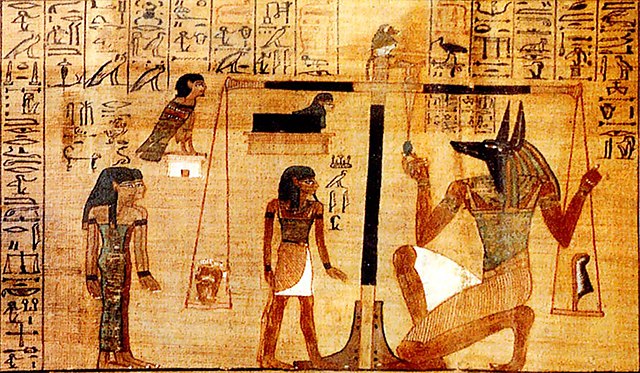
Anubis presiding over the Weighing of the Heart ceremony (PD)
Here, at the Hall of Judgments, Anubis would preside over the weighing of the heart ceremony. The heart of the deceased person, representing their soul, would be weighed against the feather of Ma’at (both a concept and a goddess of truth, order, and balance). With this concept of Ma’at, the soul of the deceased would stand before a panel of gods, goddesses, and spirits, and make a declaration of 42 truths. These truths were statements that declared a person had lived a fair, honest, and just life that did not include lying, cheating, stealing, or blasphemy. They aren’t too dissimilar from what you can find in other spiritual paths in terms of how to live a “good life”.
If the person’s soul was lighter than the feather, they were deemed worthy to continue in the afterlife. If their soul was heavier than the feather, their soul would be fed to Ammit the Devourer, a being who was part lion, part hippo, and part crocodile who consumed souls. This essentially meant their existence ended there.
Another way that Anubis can be seen is as a Liminal Lord. The concept of liminality is an in-between space. This could be the in-between space between light and dark or death and rebirth. We already see Anubis as a figure that is a psychopomp and a protector of those in their transition between life and death. There are also depictions of Anubis with a lunar disc or solar disc, often giving it to someone, symbolizing granting power and kingship to that person. In addition to this and Anubis’ connection to the dog-star Sirius, we have another representation of Anubis relating to liminality. While he does not hold dominion over the sun, moon, and stars, he does have connections to them that puts him in that liminal space. Everything dies—even stars.
In the history of Egypt, many other nations have invaded and conquered it. This meant that there were cultural and religious influences over the centuries and millennia. As the Greeks and Romans took over Egypt, Anubis’ presence, unlike some other deities, was never entirely overshadowed. He remained a prominent figure and was even assimilated into their cultures. The Greeks, and later Romans, saw him in his role as a psychopomp, similar to Hermes, and so they blended the two of them into an entirely different deity: Hermanubis. Hermanubis was portrayed as having the body of a robed man with the head of a canid and holding the caduceus.
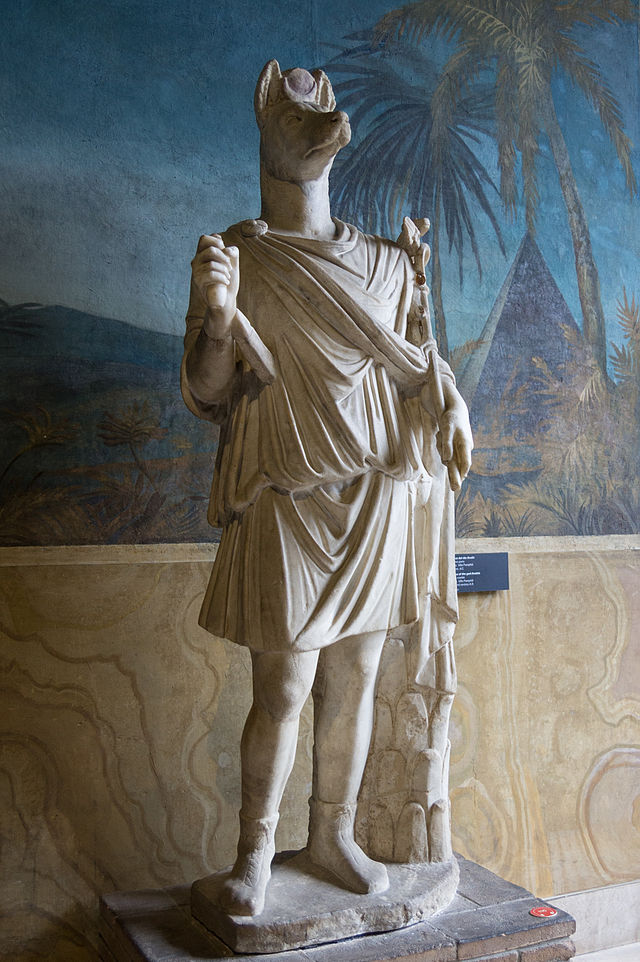
Hermanubis, photo Colin / Wikimedia Commons (CCBYSA3.0)
Hermanubis was a psychopomp who also became associated with magic and mysticism. Both Anubis and Hermanubis became powerful deities associated with these concepts. Anubis was invoked alongside deities such as Hekate in powerful magic spells, divination practices, and even curses. Both Anubis and Hekate were assigned the epithet Kleidoukhos, which translates as “keybearer” or “keeper of keys”, demonstrating their roles as psychopomps and gatekeepers to the deeper mysteries of the world. In Ancient Rome, Anubis had a cult following of necromancers who would invoke him in their practices, though this was later banned. Still today, those who work with Anubis invoke him in magical practices.
There are speculations that, in later years, as Christianity grew, Anubis was “adopted” into Christianity, in a manner of speaking. Though this is only speculation, there is a Christian saint by the name of Saint Christopher who, in his early years, was portrayed similarly to that of Hermanubis, having the body of a robed (or sometimes armored) man with the head of a canid. St. Christopher was a saint associated with protection during travel, a loose connection to the role of a psychopomp. This connection between Hermanubis and St. Christopher is mere speculation, however, and not proven in any way.
Taking a step back from all of the talks of the cycle of death and rebirth, we can see a theme of transformation. There are still quite a number of people who invoke him in their spiritual practices on a daily basis. Transformation is another one of the messages that modern practitioners – including pagans, witches, kemetics, mystics, occultists, and many others – associate with Anubis. Everyone goes through a series of “deaths” in life that may include deaths in the family, loss of jobs, divorce, health crises, moving, and a myriad of possible traumas. For many of these practitioners, Anubis is a guide through these changes and a rock of strength, guardianship, and protection. He is someone who leads them through these transformative periods – or “deaths” – and to something lighter.
Modern practitioners of many spiritual paths also invoke Anubis in divinatory and magical practices, which have their roots in Ancient Greek and Roman practices which, as described above, invoked Anubis in these rites. His connection to the mystical realms makes him a powerful ally.
A person’s spiritual journey is different from another’s, and the way that a person perceives a god or goddess differs as well. However, many modern practitioners who work with Anubis describe him as being a kinder, gentler figure when compared to other death deities who are often portrayed in a more direct, or even harsh, light. He is often seen as a figure who can be called upon reliably for guidance and protection and who shows compassion to those who approach him. There is always a bit of a warning, though, that invoking a deity needs to be done properly and with a healthy dose of caution.
Anubis never really “disappeared”. You can find him in popular culture – including movies, books, and TV shows, and though these are, of course, gross exaggerations of his actual character, they still show that he holds a place in people’s minds. Many modern practitioners of many spiritual paths still work with Anubis with regular devotion and invocation in their rites. Anubis has existed for thousands of years in the hearts and minds of people and, undoubtedly, will continue for many more. He will remain the guardian who rests in the in-between spaces, between the light and shadow.






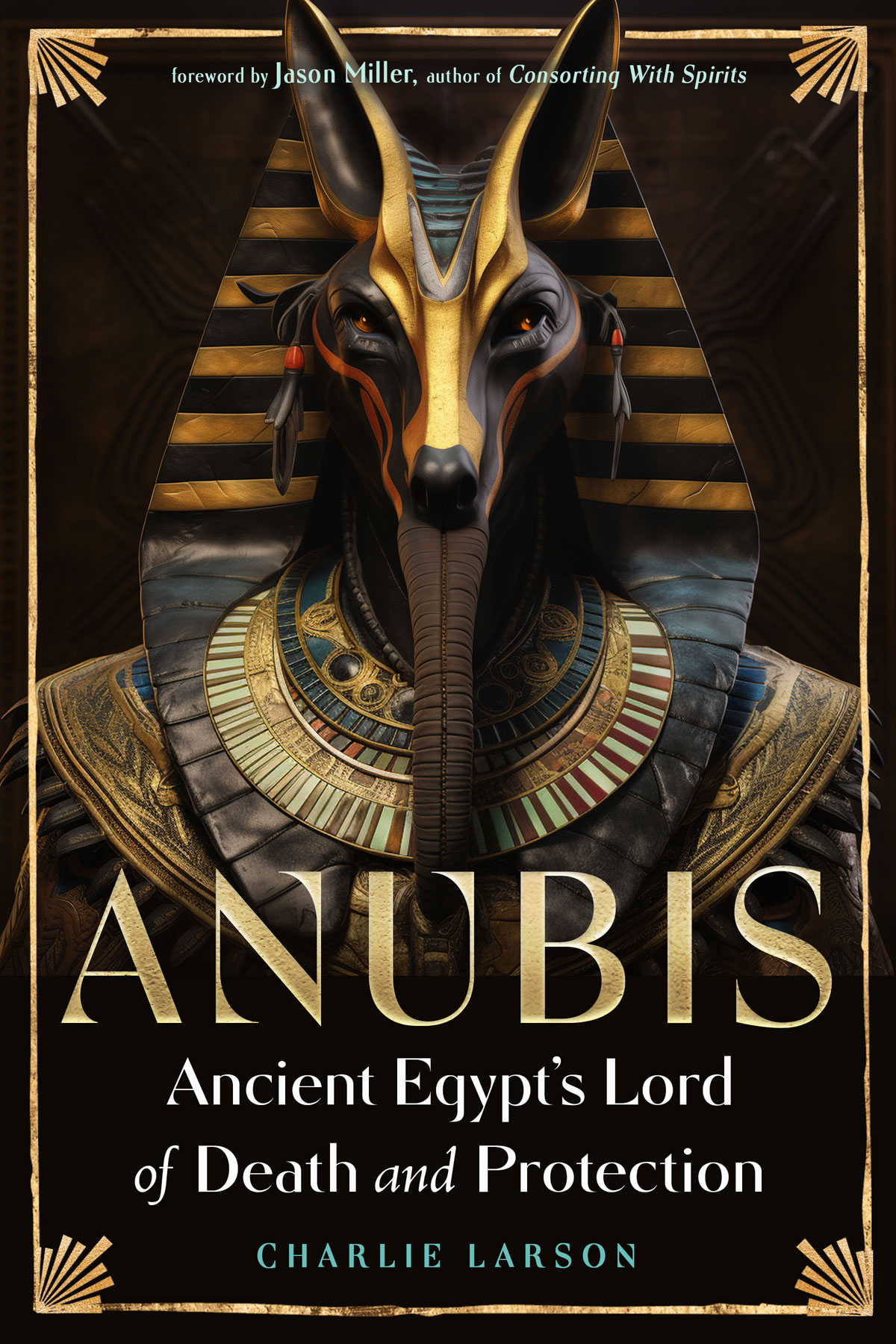
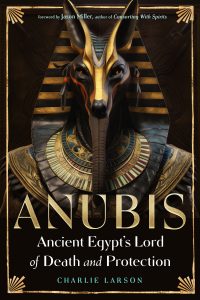
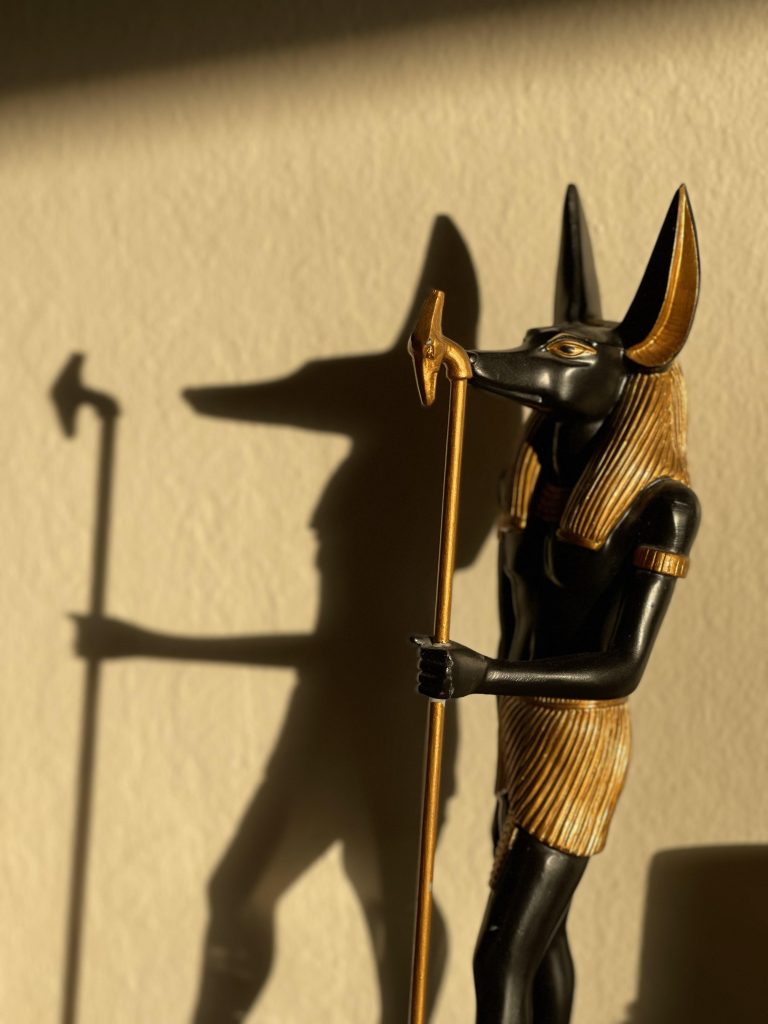
Thanks ! Interesting read sir.
Wonderful! I was just wondering about St Christopher having the head of a dog that looks like Anubis I think you’re on to something there! Keep up the great work in research let me know if you ever need an assistant LOL